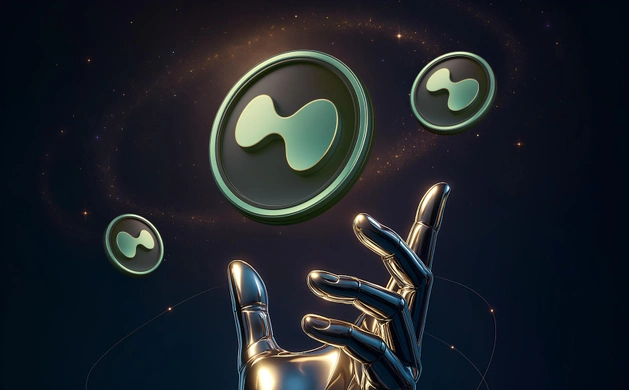What is a Layer 3? Definition & Examples
.webp)
Summary: Layer 3 networks enhance the scalability of Layer 2 platforms such as Arbitrum and Optimism by providing specialized functions for various applications. These enhancements focus on privacy, application performance, and optimization tailored to particular sectors like DeFi or on-chain gaming.
Notable examples include Degen Chain, which serves the Farcaster community, and XAI, a gaming ecosystem developed on Arbitrum. These implementations demonstrate how Layer 3s adapt and expand blockchain capabilities to meet specific needs.
What is a Layer 3?
Layer 3 refers to an additional layer in the blockchain stack that builds on top of Layer 2 solutions, like Arbitrum or Optimism, designed for application-specific execution environments. Often referred to as appchains, Layer 3 networks allow for greater customization, enabling decentralized apps (dApps) to optimize for their specific needs, like gaming or DeFi.
This approach enhances the modularity and scalability of the blockchain ecosystem, providing advanced solutions that Layer 1 and Layer 2 cannot fully support. By integrating Layer 3, the blockchain ecosystem can tackle challenges in a more nuanced and efficient way, evolving the architecture to meet the growing demand for blockspace.

Layer 3 Examples
Layer 3 networks, particularly appchains supported by solutions like Celestia, are gaining attention in the crypto space for their targeted use cases. Below are some of the best Layer 3 crypto assets currently active on the mainnet:
- Degen Chain: Running on Base, Degen Chain supports a niche within the Farcaster network, rewarding users with DEGEN tokens for valuable contributions, driving community engagement and decentralized content creation.
- XAI: A Layer 3 on Arbitrum Orbit built to improve gaming experiences. It enhances transaction efficiency for on-chain games like Axie Infinity and Gods Unchained, optimizing performance for smoother gameplay.
- Kinto: Focused on institutional investors, Kinto operates as a KYC-compliant DeFi platform on Arbitrum. It offers secure and regulated financial services, ideal for sophisticated investors.
- Dream Machine Token (DMT): Also on Arbitrum, DMT targets blockchain gaming, offering a mix of native games and streaming services, including options like poker, creating a versatile entertainment hub.
These examples highlight the specialized solutions that Layer 3 networks bring to sectors like gaming and institutional finance, pushing the boundaries of blockchain utility.
.webp)
Layer 2 vs Layer 3
Layer 2 focuses on scaling blockchains like Ethereum by handling off-chain transactions, which boosts speed and reduces costs without compromising security. Leading Layer 2 solutions—such as Arbitrum, Optimism, and zkSync—process high volumes of transactions, easing the load on Layer 1 networks.
Layer 3 extends these improvements by offering specialized features, such as enhanced privacy, cross-chain interactions, and application-specific optimizations. It builds on Layer 2's foundation but addresses more complex demands, making it key for projects that need more than just transaction scaling.
Risks of Layer 3’s
Layer 3 solutions, while expanding blockchain functionality, bring additional security concerns due to their added distance from the Layer 1 base chain, such as Ethereum. The further separation introduces more potential vulnerabilities, especially around data consistency and transaction finality.
Key risks with Layer 3s include smart contract vulnerabilities and reliance on network infrastructure, such as sequencers. These complexities increase the chances of errors or failures due to the extended trust model across multiple layers.
Platforms like L2BEAT offer insights into risk factors, evaluating aspects like contract logic, state validation, and sequencer architecture. Before interacting with Layer 3 networks or moving assets, it’s critical to assess these risks carefully.

Do Layer 4’s Exist?
The idea of Layer 4 in blockchain is speculative but not entirely out of the question. As the ecosystem evolves, each new layer is typically created to solve specific problems that the previous layers couldn't address.
A potential Layer 4 could emerge if the need arises for even more specialized features, such as enhanced interoperability between Layer 3 networks, complex off-chain computations, or further application-specific customizations. But, with Layer 3 still developing, it’s far too early to predict.
Bottom Line
In summary, Layer 3 networks bring a new level of flexibility to the blockchain ecosystem, offering custom solutions that Layer 1 and Layer 2 can't handle on their own. By focusing on areas like privacy (via zk-proofs) and cross-chain capabilities, Layer 3 allows decentralized apps to be more efficient and specialized.
%2520(1).webp)
Written by
Tony Kreng
Lead Editor
Tony Kreng, who holds an MBA in Business & Finance, brings over a decade of experience as a financial analyst. At Datawallet, he serves as the lead content editor and fact-checker, dedicated to maintaining the accuracy and trustworthiness of our insights.

.webp)
%2520(1).webp)

.webp)




